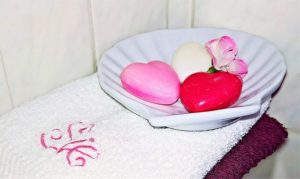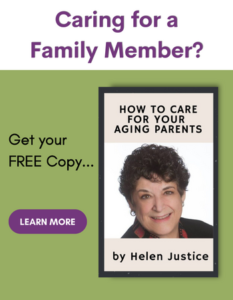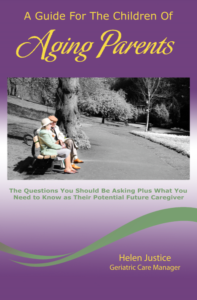Personal care activities include eating, bathing, shaving, caring for the skin, hair and mouth, and transferring (moving from  chairs, toilets or bed). During the course of our daily lives these activities are taken for granted until weakness or a disability makes them difficult to accomplish independently or safely. Providing assistance requires knowledge, patience, skill and physical strength.
chairs, toilets or bed). During the course of our daily lives these activities are taken for granted until weakness or a disability makes them difficult to accomplish independently or safely. Providing assistance requires knowledge, patience, skill and physical strength.
Bathing
Bathing an older person may require strength, special equipment and skills. It is advised that caregivers ask the elderly person’s doctor and.or physical therapist for special instructions on how to safely bathe the care-receiver.
Shampooing and Shaving
Visits to a barber or hairdresser are very positive experiences. Individuals who provide this service will often come to the home. Wetting hair with alcohol or cream rinse helps to remove the snarls. Dry shampoos are available if your family member is bed bound. People who are diabetic or on medication to thin the blood (anti-coagulants, i.e., Coumadin) should use an electric shaver to reduce the risk of cuts. It is much easier and safer to shave another person with an electric razor.
Skin Care
- Keep skin clean and dry, especially when people are having problems with bowel and bladder control. When washing, use a mild soap, rinse well, and dry thoroughly.
- Keep bed linens clean, dry and free of wrinkles. Disposable bed pads can be purchased at a drug store and can keep sheets dry so that the caregiver does not have to change sheets so often.
- Massage skin gently using a light, circular motion. Change the position of older people at least every two hours, particularly for those confined to a bed or wheelchair. Encourage them to shift their weight between position changes to redistribute pressure onto other areas.
- Encourage good nutrition and adequate fluid intake. As a supplement to your family member’s diet, give a multi-vitamin every day to ensure proper nutrition. Check with the physician as to the appropriate supplement.
- Use mattress and chairs that are soft and form-fitting rather than rigid and hard. (Example: egg crate mattress and sheep skin). This spreads the weight over a larger skin area, decreasing the pressure under the bones.
- Encourage movement or mild exercise; this helps stimulate circulation which is good for the skin. Combing hair and helping with bathing and dressing are good ways for frail people to get exercise and be more independent.
- Watch for possible sources of pressure on anything that would interfere with good circulation, such as tight shoes, elastic cuffed socks or tight undergarments.
- Bony prominences are prone to skin breakdown. They are heels, feet, behind the knees, hips, buttocks, sacrum, elbows and shoulder blades. A special air mattress may be ordered by the doctor to prevent skin breakdown.
- Watch for any redness or a break in the skin and report it immediately to the doctor or nurse, and keep the care-receiver off the affected side.
Toileting
- Safety features in the bathroom, such as grab bars and raised toilet seats, make using the bathroom safer.
- A commode or urinal may be necessary when flexibility and distance to the bathroom are a problem. They may be especially helpful at night.
- Lack of control over bowel or bladder functions can be embarrassing and older people may try to hide it from caregivers and professionals. Be sensitive to the older person’s feelings, and mention this to the doctor. Loss of bowel and bladder control is not a part of normal aging and often can be controlled.
- For the care-receiver with bowel and/or bladder problems it may help to take them to the bathroom every 2 hours. Specialized programs exist to retrain a bladder and bowel function. Check with your doctor or nurse for a program in your area.
- Constipation or Irregularity: Many elderly become constipated due to medications and inactivity. If your care-receiver is experiencing this problem the doctor or nurse can suggest a stool softener. Other important factors are:
- Eat plenty of fresh fruit, vegetables and foods high in fibers.
- Drink at least 8 glasses of water a day.
- Avoid constipating foods like cheese, rice, bananas, etc.
- Exercise as much as is tolerated.
- Be sure your doctor is aware of all the medications being taken.
Assisting with Eating
Eating can be very time-consuming, especially if the older person must be fed. Encouraging independent eating saves time for caregivers, and promotes the independence and self-worth of the older person. Try to relax yourself and enjoy the time spent with your care-receiver. Here are some suggestions for encouraging independence:
- Check gums for areas of redness. Dentures may not fit correctly and cause the family member pain when chewing.
- Provide adaptive equipment such as plate guards or special silverware with built-up handles. These can be purchased from medical supply houses (listed under Hospital Equipment and Supplies in the Yellow Pages). An occupational therapy evaluation can recommend the best for each individual.
- Prepare finger foods which may be easier to eat than those requiring utensils.
- Encourage older people to use a straw, cups with 2 handles, or a glass with ribbed surface for independent drinking.
- If the older adult has limited vision, consistent place setting of food and utensils helps to know where to find silverware, beverage, etc. Using the clock method to locate food may be helpful; for example, Your meat is at 9 o’clock, your potato is at 12 o’clock and your carrots are at 3 o’clock.
- Reminder: Treat older people who are being fed as adults, not children. Disciplining poor eating habits should be avoided. When they lack interest in food, try to learn the reason. For example, ask if they are thirsty or not feeling well, or if the food in not appetizing on this occasion.
- Transferring: Moving people who cannot move safely by themselves requires skill, knowledge, and some strength. For every type of disability, there is a specific technique to use. Ask a doctor, therapist or attend caregiver training for specific techniques. In all cases, remember:
- When lifting, do not add your own weight to whatever you are lifting — get close and keep balance centered.
- Do not use weak back muscles to lift – use your leg muscles because they are much stronger.
- Do not twist when you are lifting – instead, change the position of your feet so that you face the older person, keeping your spine straight.
- Balance is vital – spread your feet to serve as a base for support.
- Your doctor can refer you to a physical therapist who can teach you to transfer safely.
Rest and Sleep
As we age, our sleep patterns change. The elderly require less sleep time. It takes longer for them to fall asleep. Also, awakenings during the night increase. Scheduled rest times are important. A few naps during the day can refresh and revitalize the care-receiver. However, if you notice that your care-receiver is sleeping for brief periods during the night, it could indicate a problem. Notify your doctor and discuss your concerns.
Tips for Encouraging Self Care
- Allow the care-receiver to do as much as possible; provide only as much help as needed. When older people do all or part of their own personal care, it is a form of exercise that will help maintain strength as well as promote independence. No matter how small the activity (holding the soap, combing the front of the hair, etc.) it is important that the person be able to participate.
- Adapt the home to allow the care-receiver to do more things. Install equipment such as grab rails in the bathroom, wheelchair-accessible sinks and mirrors, bath bench for the shower or tub, and lights with switches that can be easily reached.
- Seek the aid of therapists or nurses to teach you how to perform personal care tasks safely and effectively.
- Learn about the care-receiver’s disability and what you and others can do to help him/her function as independently as possible. If the older person cannot perform a certain activity, see if there is a part that can be done. For example, one might be able to independently dress the upper body if sitting, but require help dressing the lower body.
- Whenever possible, include the care-receiver in making plans for his/her care. Take suggestions and feelings into consideration and encourage involvement in his/her own care. Sometimes, slowing the pace of an activity allows older people to do more for themselves.
- Be aware of changes in the care-receiver’s health and abilities. Your plans for care will change as the care receiver changes.
Copyright 2017 – Helen Justice GCM – Elder Care Navigator and Advocate – Advanced Wellness GCM, Inc
Known by many as “The Elder Care Navigator”, Helen Justice is a Certified Geriatric Care Manager trained to assist elders and their families with the process of aging with dignity and grace. Her knowledge and experience insures elders obtain quality care and transitional preparation for their future. More important than the financial aspect of aging is the social and emotional component that elder care places on the family. Go to www.advancedwellnessgcm.com for information on no fee seminar.



Stay Up To Date With AWGCM